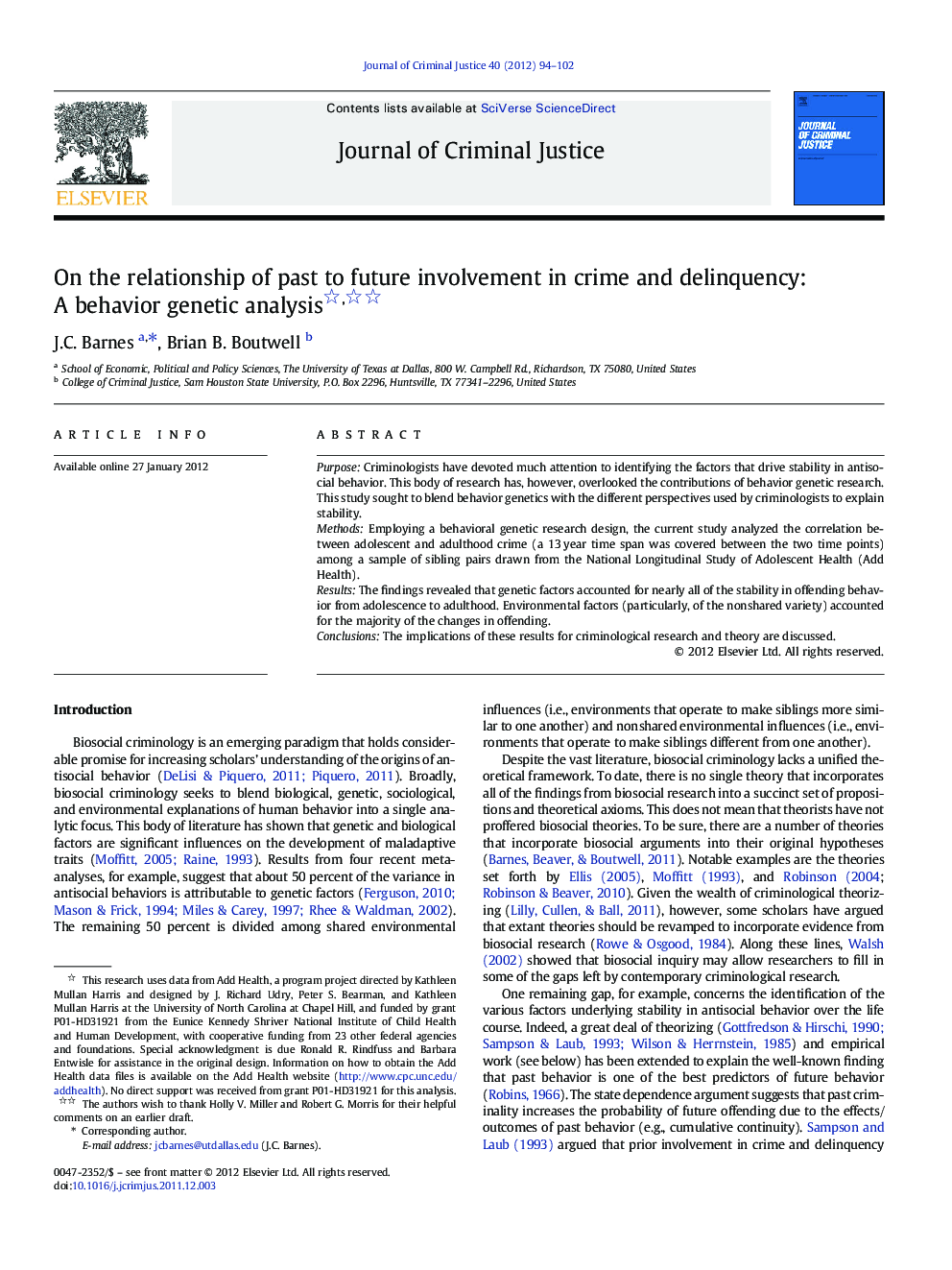| Article ID | Journal | Published Year | Pages | File Type |
|---|---|---|---|---|
| 882852 | Journal of Criminal Justice | 2012 | 9 Pages |
PurposeCriminologists have devoted much attention to identifying the factors that drive stability in antisocial behavior. This body of research has, however, overlooked the contributions of behavior genetic research. This study sought to blend behavior genetics with the different perspectives used by criminologists to explain stability.MethodsEmploying a behavioral genetic research design, the current study analyzed the correlation between adolescent and adulthood crime (a 13 year time span was covered between the two time points) among a sample of sibling pairs drawn from the National Longitudinal Study of Adolescent Health (Add Health).ResultsThe findings revealed that genetic factors accounted for nearly all of the stability in offending behavior from adolescence to adulthood. Environmental factors (particularly, of the nonshared variety) accounted for the majority of the changes in offending.ConclusionsThe implications of these results for criminological research and theory are discussed.
► This study analyzed stability and change in criminal behavior across a 13-year span. ► Genetic factors explained the majority of stability in antisocial behavior. ► Genetic and nonshared environmental factors explained changes. ► Population heterogeneity explanations of stability are consistent with the findings. ► State dependence theories may be salient for explaining behavioral change.
